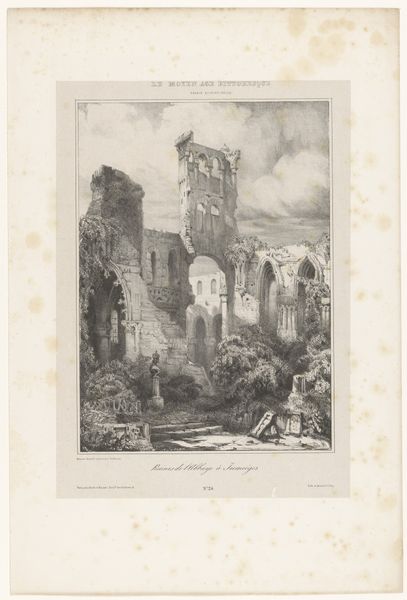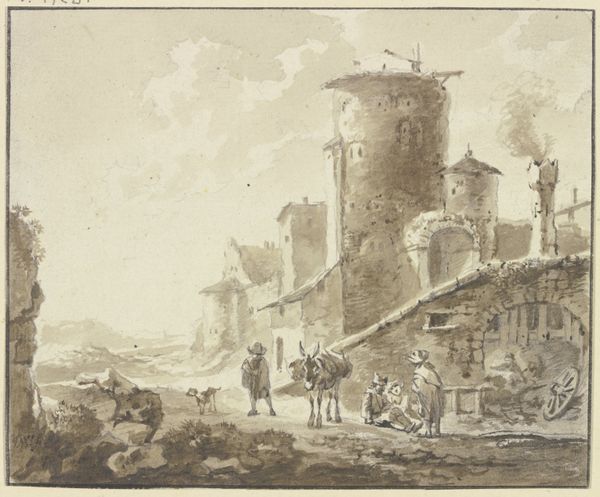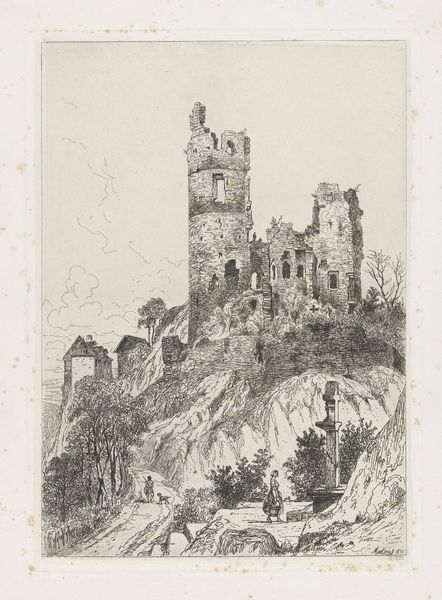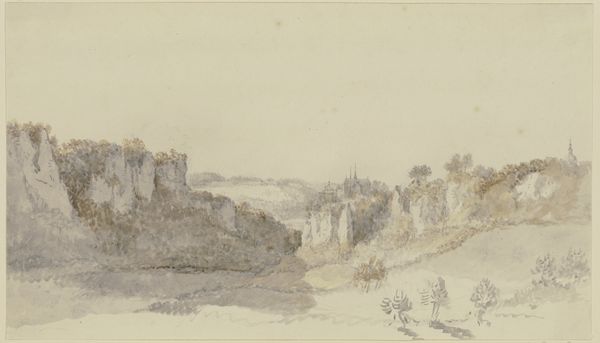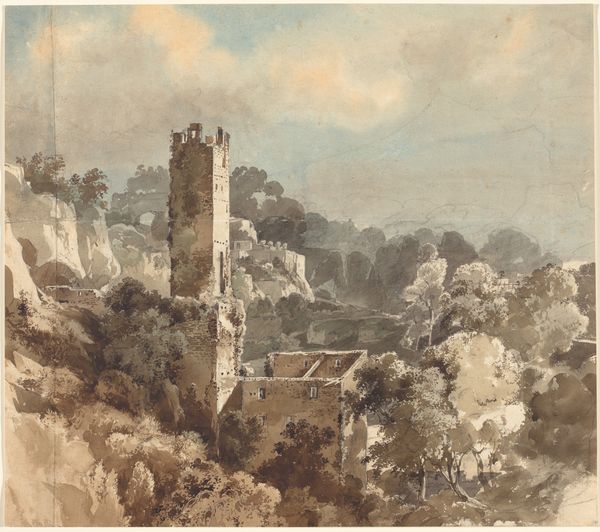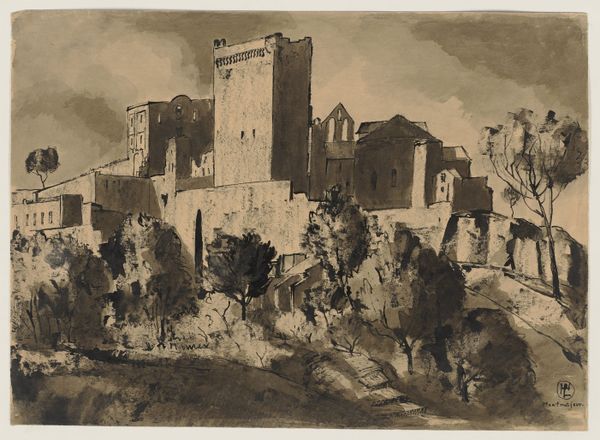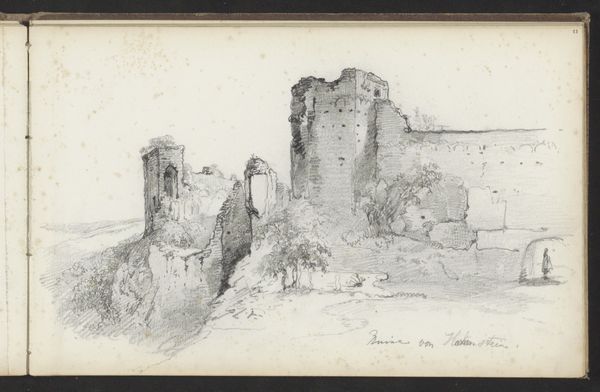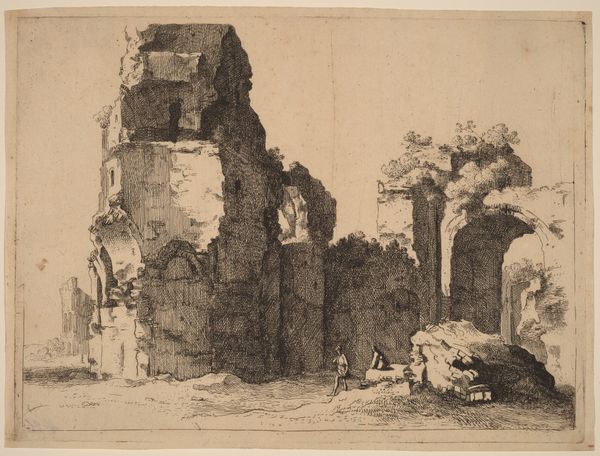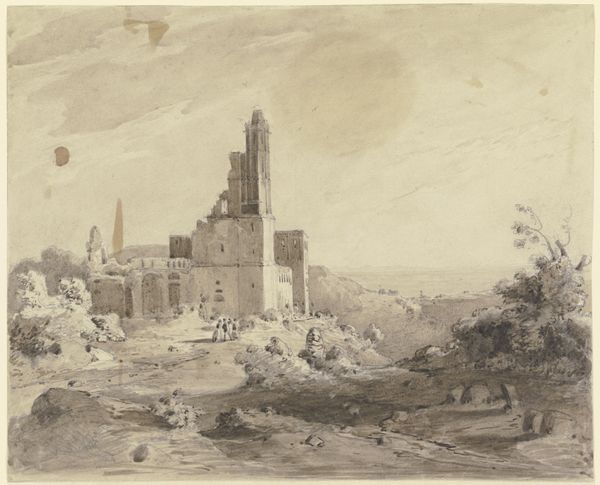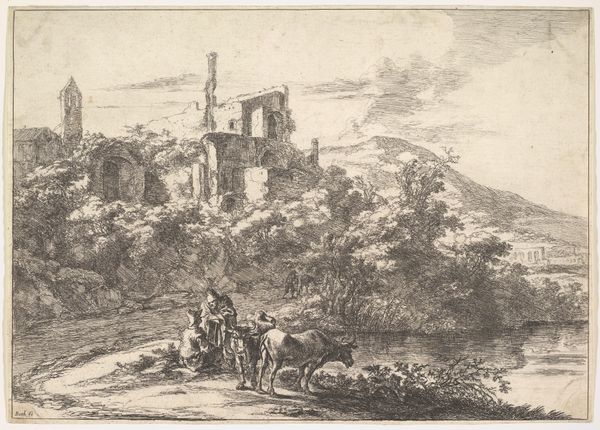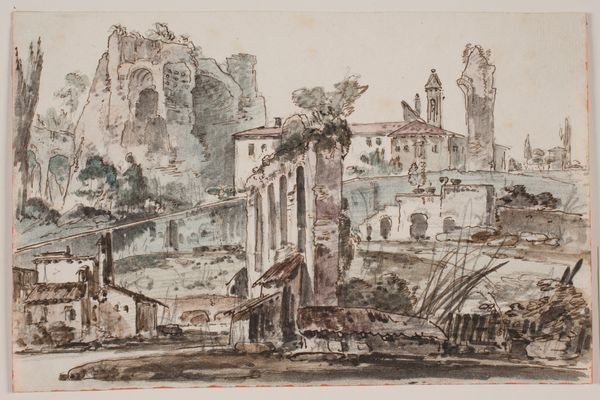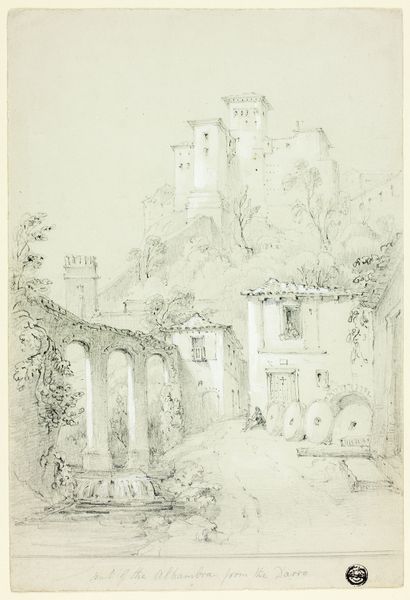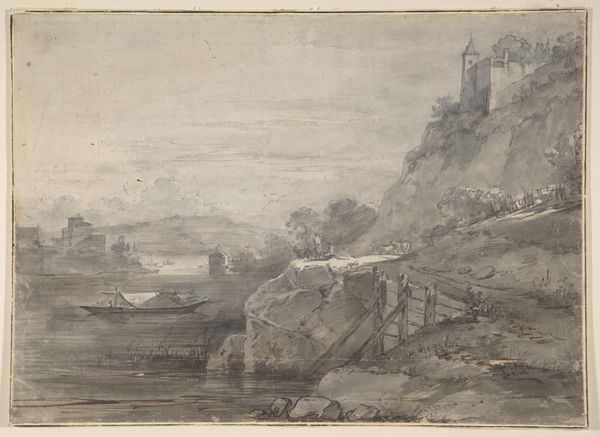
drawing, pencil
#
drawing
#
pencil sketch
#
landscape
#
charcoal drawing
#
pencil drawing
#
romanticism
#
pencil
#
watercolour illustration
#
watercolor
Dimensions: height 271 mm, width 368 mm
Copyright: Rijks Museum: Open Domain
Editor: So, this is "Wandelaars bij de ruïne Ehrenfels aan de Rijn," dating somewhere between 1821 and 1872, by Theodor Verhas. It looks like it’s a drawing, maybe pencil on paper? It has a really wistful, almost melancholy feel to it. What do you see in this piece? Curator: I see echoes. The ruin itself, Ehrenfels, becomes a symbol not just of physical decay, but of the passage of time, the erosion of power, and the fading of memory. Even the Rhine evokes something of an allegorical image, no? It's been a border, a trade route, a witness to countless events… Editor: I see that, especially the way the towers are crumbling, like memories fading at the edges. Curator: Precisely. And consider the figures—wandering amidst these ruins. Are they merely observers, or do they represent us, the viewers, contemplating our own mortality and the ephemerality of human achievement? The iconography of ruins ties into larger cultural narratives. Think of the Romantic movement's obsession with them! Editor: That makes sense. So, it’s not just a picture of a ruined castle, but a meditation on history and time? Curator: Absolutely! Ask yourself what the symbolism of ruins might represent across different eras. Their image has adapted from signifier to signifier, a kind of continuous reinterpretation of history through changing social circumstances and the cultural zeitgeist of the observer. What will future civilisations learn from us and from the monuments and relics we have left behind? Editor: That’s fascinating! I'll never look at a "simple" landscape drawing the same way again. Curator: Indeed. It shows us the weight images can carry across generations, and how their meanings shift and evolve with time.
Comments
No comments
Be the first to comment and join the conversation on the ultimate creative platform.
